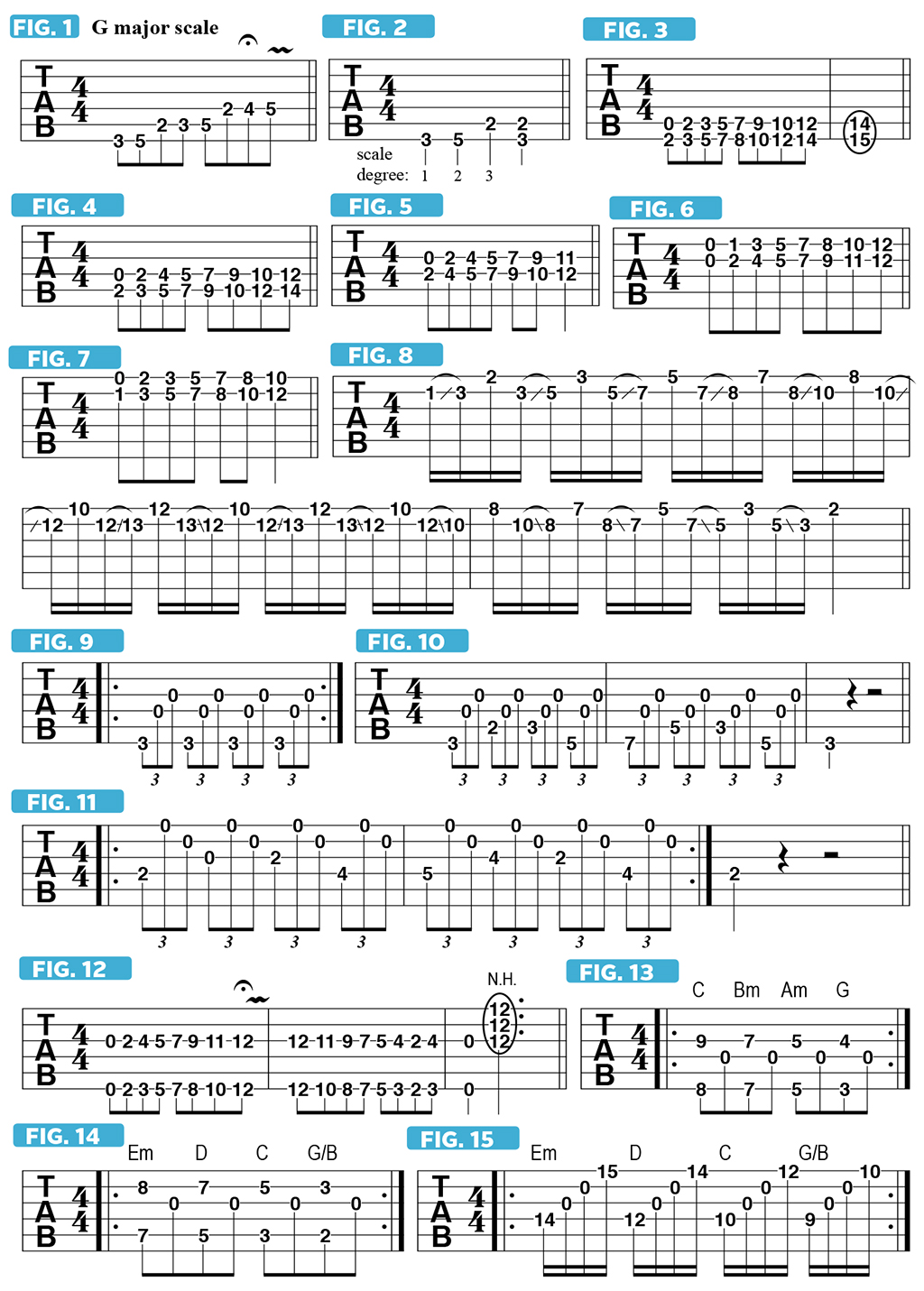Exploring Ways to Utilize Diatonic Thirds in the Key of G
Learn some creative, appealing ways to utilize diatonic thirds.
In this lesson, I’d like to present some creative, appealing ways to utilize diatonic thirds. What, you may ask, are diatonic thirds? The answer is simple: a third is formed when two notes are played, either together or in succession, that are either one and one half or two whole steps apart. The determining factor in choosing the specific intervallic distance is dictated by the key and scale we’re playing in, which is what the term diatonic means — scale-based. One can use these two-note combinations in both lead and rhythm parts in a seemingly endless number of ways.
FIGURE 1 illustrates the G major scale (G A B C D E F#), which we’ll use as a reference point. A third interval is formed by pairing the first and third notes of the scale, G and B, as shown in FIGURE 2. Likewise, we can pair the second and fourth notes, A and C, and these notes are a third apart as well. If we continue the process through the entire scale while remaining on the bottom two strings, the result is the pattern shown in FIGURE 3. The next step is to expand this survey to every pair of adjacent strings, as illustrated in FIGURES 4-7.

Play all of these pairs in ascending and descending manner, doing your best to memorize the sequence of “shapes” — the fret distance between the two notes — as they fall on each string pair. Try making up melodies using these pairs as a means of focus and study.
A great way to expand upon this idea is to play the notes of each pair in succession, as opposed to simultaneously, as demonstrated in FIGURE 8. Throughout this phrase, two notes are sounded on the B string, followed by a single note on the high E string that’s a third higher, again staying diatonic to the G major scale. Finger slides are used to smoothly connect each pair of notes.
To explore a “rhythm-guitar” application of thirds, let’s first establish a fingerpicking pattern. FIGURE 9 presents a repeating eighth-note-triplet phrasing pattern, beginning with the thumb picking the low G root, followed by the index and middle fingers picking the open D and G strings. In FIGURE 10, the relationship of diatonic thirds comes into play, via the shifting bass notes that fall on each downbeat. Beats one and two begin with G and B, and then the sequence is reversed on beats three and four as C, the higher of the two notes in the next pair, is followed by A, the lower note. In FIGURE 11, the idea is transposed to E minor and played across the top four strings.
If we transpose the higher note of a third interval up an octave, this forms a 10th interval. FIGURE 12 illustrates these diatonic 10ths shapes, played on the low E and G strings, while FIGURES 13-15 offer a handful of creative ways to construct melodic rhythm parts that are all based on 10ths.
New York CIty guitarist Joel Hoekstra plays for Whitesnake, the Trans-Siberian Orchestra, Cher and his own side project, Joel Hoekstra’s 13, whose latest release is Dying to Live.
All the latest guitar news, interviews, lessons, reviews, deals and more, direct to your inbox!
